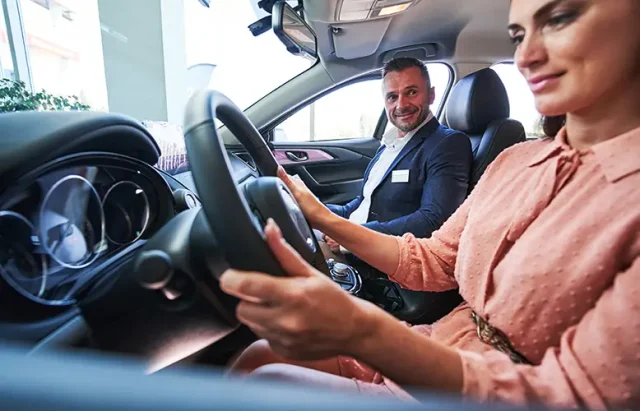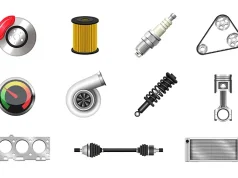
The Importance of Test Driving When Buying a Used Car
When searching for a used car, it’s easy to be tempted by an incredible deal or the charm of a dream vehicle. Before making any commitments, one crucial step should never be overlooked: the test drive. This experience is essential for evaluating the car’s performance, comfort, and overall condition. Test driving plays a vital role in the car-buying process, and there are several tips to ensure that the experience is both informative and beneficial.
Why Test Driving Is a Must Before Buying a Used Car
A test drive is the only way to truly understand how a used car performs on the road. It allows you to experience how the car handles, brakes, accelerates, and sounds—all factors that impact your decision. While a used car dealership may provide pictures and descriptions that paint a great picture, they won’t reveal any hidden issues. A 20-minute drive could save you from costly repairs or regrets in the future.
Evaluate the Car’s Mechanical Condition
While a pre-purchase inspection is a good step, there’s no substitute for firsthand experience. During the test drive, you can identify potential mechanical issues like strange noises, poor handling, or warning lights that a seller might not have disclosed.
Here’s what you should check:
- Engine Performance
Pay attention to how smoothly the engine runs. Hesitation during acceleration or stalling could indicate mechanical problems.
- Braking System
Test the brakes for responsiveness. Listen for any unusual sounds like grinding or squeaking.
- Transmission Shifts
If it’s automatic, shifts should be smooth and effortless. For a manual, gear changes should feel crisp and accurate.
- Suspension
Drive over bumps or uneven surfaces to evaluate the suspension system. A worn suspension can result in an uncomfortable ride and costly repairs.
In addition to your test drive, consider following a comprehensive vehicle pre-purchase inspection checklist to ensure you don’t miss any critical steps in assessing the car’s condition.
Does the Car Suit Your Comfort Needs?
Comfort is just as important as performance when buying a used car. A car might look perfect on the outside, but how does it feel on the inside? Comfort and ergonomics play a key role in your overall driving experience, especially if you spend a lot of time on the road.
Consider the following:
- Seat Comfort: Are the seats supportive and adjustable to your liking?
- Interior Space: Is there enough legroom and headroom for you and any passengers?
- Visibility: Check for blind spots or areas obstructing your view while driving.
- Controls and Technology: Make sure all buttons, levers, and tech features like infotainment systems and air conditioning are easy to use and in working order.
How Long Should a Test Drive Be?
To thoroughly understand how the car operates, a test drive should last at least 20 minutes. Driving in various conditions, such as highways, city streets, and parking lots, is important. It will give you a more comprehensive feel for the car in different driving environments. Testing a vehicle only in smooth conditions can hide potential problems.
What to Check During Your Test Drive?
To ensure you cover all aspects of the car’s performance, follow this checklist during your test drive:
- Start-Up
Listen for unusual sounds when starting the car. The engine should start without hesitation.
- Acceleration
Test how the vehicle accelerates from a complete stop and responds when you press down on the gas.
- Brakes
Try braking at different speeds to see how the car responds. The braking process should be smooth without any pulling or grinding.
- Steering
Evaluate how the car handles corners and turns. The steering wheel should feel responsive without excessive play.
- Comfort and Ergonomics
Make sure the seat, steering wheel, and mirrors are comfortable and adjustable.
- Noise Levels
Pay attention to road noise, engine noise, and any rattles indicating wear.
Common Mistakes to Avoid During a Test Drive
Many people overlook important details during a test drive when buying a used car. Below are some common mistakes to avoid:
- Not Driving in Different Conditions
Always test the car in various road conditions. It will give you a complete picture of how the car performs.
- Focusing Only on Looks
A vehicle may look pristine, but that doesn’t mean it’s mechanically sound. Make sure you focus on performance and comfort rather than just aesthetics.
- Not Checking the Warning Lights
Attention is given to any dashboard warning lights closely. Ignoring these can lead to costly repairs later on.
- Rushing the Test Drive
Take your time! Rushing through a test drive may cause you to miss crucial red flags.
The Impact of Skipping the Test Drive
You might be tempted to skip the test drive, especially if the car appears in great shape or comes with a glowing report from the seller. However, failing to test drive a used car could result in several unwanted surprises, including:
- Mechanical Issues
Even if the car passes a visual inspection, unseen mechanical problems can emerge during a drive.
- Buyer’s Remorse
You may realize the car isn’t as comfortable or enjoyable as you thought. Once you’ve purchased the vehicle, it’s too late to back out without significant financial loss.
- Missed Opportunities
Sometimes the act of driving a car will reveal options or features you may not have noticed or appreciated before the test.
How to Make the Most of Your Test Drive?
It is important to make sure the car you’re considering is the right fit for you. Here are some tips to ensure you make the most of this crucial step:
1. Come Prepared
Bring a checklist of things you want to evaluate during the drive.
2. Ask Questions
If something doesn’t feel right, ask the seller about it. Don’t hesitate to request more time or another drive if needed.
3. Bring a Friend
Another set of eyes and ears can catch things you might miss.
4. Don’t Be Afraid to Walk Away
Don’t feel pressured to purchase if the car doesn’t meet your expectations during the test drive.
Conclusion
Taking a used car for a test drive is the best way to figure out if it’s truly the right one for you. It lets you spot mechanical problems, see how comfortable it feels, and decide if it fits your driving style. Skipping this step could leave you facing costly repairs or regret later on, so don’t rush into a purchase without getting behind the wheel first. While a car might look perfect in photos, the driving experience tells you if it’s a good match. Follow these tips, take your time with the test drive, and you’ll feel confident knowing you’ve made a smart, informed choice when buying your next used car.
Instead of skipping that car and looking for another, browse wheels for sale. After purchasing the used car, you will need to invest in high-quality wheels and have them installed by a professional.
Ultimately, test-driving before purchasing will give you confidence knowing you’ve made a wise, informed choice when buying your next used car.





